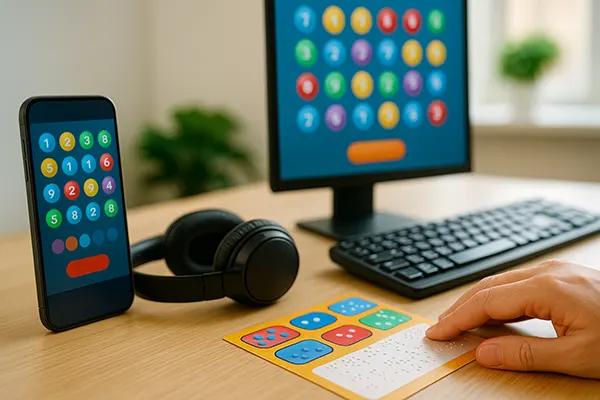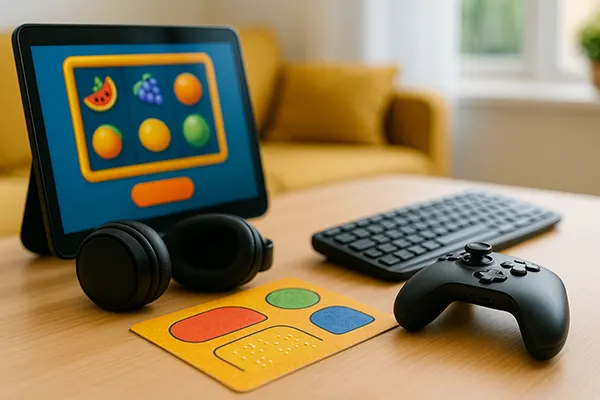
Inclusivity in Lotteries: How Organisers Adapt for People with Disabilities
Lotteries have long been a popular form of entertainment, offering chances of winning prizes through luck. However, for many years, accessibility was not a top priority in their development. In recent times, there has been a notable shift: lottery organisers are now actively working to include people with disabilities, ensuring that everyone can participate on equal terms. Inclusivity is no longer optional—it’s an ethical and social imperative backed by regulation, technology, and growing public awareness.
Technological Advancements for Better Accessibility
One of the key transformations in lottery accessibility has come through digital technology. Many operators have invested in making their websites and mobile interfaces more user-friendly for people with visual, auditory, or motor impairments. Features such as screen reader compatibility, voice commands, adjustable contrast, and keyboard navigation have become standard in inclusive lottery environments.
Additionally, ticket purchase and draw result interfaces are increasingly built to comply with the Web Content Accessibility Guidelines (WCAG) 2.1, ensuring clarity and functionality for all users. Assistive technologies are being integrated natively into lottery systems, making participation feasible for players who previously faced significant barriers.
More advanced systems also support real-time captioning for live draws and audio descriptions, allowing people with hearing or visual impairments to follow the process independently. These solutions demonstrate a commitment to full autonomy for participants, regardless of their physical limitations.
Mobile Integration and Voice Support
Mobile apps now incorporate voice control features that let users navigate, select numbers, and confirm purchases without needing to use their hands. This innovation is especially helpful for individuals with limited motor control or paralysis.
Lottery apps also offer vibration-based alerts and feedback, making them more accessible for those with hearing impairments. The combination of tactile, audio, and visual cues ensures that people with different types of disabilities can engage comfortably.
By using smartphones as universal access devices, organisers are not only promoting inclusion but also meeting legal standards set by the European Accessibility Act and similar national regulations in 2025.
Regulatory Pressure and Institutional Commitment
Governments and licensing authorities have started imposing stricter requirements on gambling service providers, including lotteries. In countries like the UK, Denmark, and Germany, operators must prove compliance with accessibility standards in order to retain or renew their licences.
This regulatory pressure is coupled with public campaigns advocating for the rights of people with disabilities to enjoy the same recreational opportunities as everyone else. As a result, inclusive design has shifted from a niche concern to a core business requirement within the lottery industry.
Organisations such as the European Lotteries Association and the World Lottery Association have introduced best-practice frameworks that promote universal access, training for staff, and inclusive marketing strategies. These guidelines encourage members to evaluate their products regularly for compliance and real-world usability by people with disabilities.
Training and Awareness Among Lottery Staff
Beyond technological changes, human factors are equally important. Lottery employees—both customer service representatives and technical teams—are receiving training in accessibility awareness and inclusive communication practices.
This includes understanding the needs of players who may have cognitive, visual, or auditory impairments and being able to assist without condescension or confusion. Staff are taught to guide users through the process without assuming incapacity or offering unnecessary help.
Inclusive service training enhances the overall player experience and builds a reputation of trustworthiness and respect among disabled communities, who often face exclusion in many areas of life.

Innovative Game Formats and Inclusive Communication
New game formats are being designed with broader accessibility in mind. Traditional physical scratch cards, for example, are now offered in tactile versions with braille indicators, making them accessible to blind players. Digital scratch cards with audio instructions have also become common.
Communication materials such as adverts, instructions, and result announcements are being developed with simple language, high-contrast visuals, and alternative text formats. This benefits not only disabled players but also elderly participants and individuals with limited literacy skills.
Moreover, inclusive lotteries ensure that promotions are not misleading or difficult to interpret. Clear prize structures and intuitive design are vital for players who may process information differently due to cognitive impairments or neurological conditions.
Collaborations with Disability Advocacy Groups
Lottery organisers increasingly collaborate with disability advocacy groups to test and improve their products. These partnerships help identify real-world obstacles that may not be evident to internal design teams.
Such collaborations lead to the creation of pilot programmes, user-testing panels, and feedback loops that prioritise continuous improvement over one-time adjustments. This community-driven development approach has proven effective in creating meaningful change.
Through regular consultations, lotteries can remain adaptive and responsive, ensuring that their products reflect the real experiences of players with disabilities rather than theoretical compliance alone.
